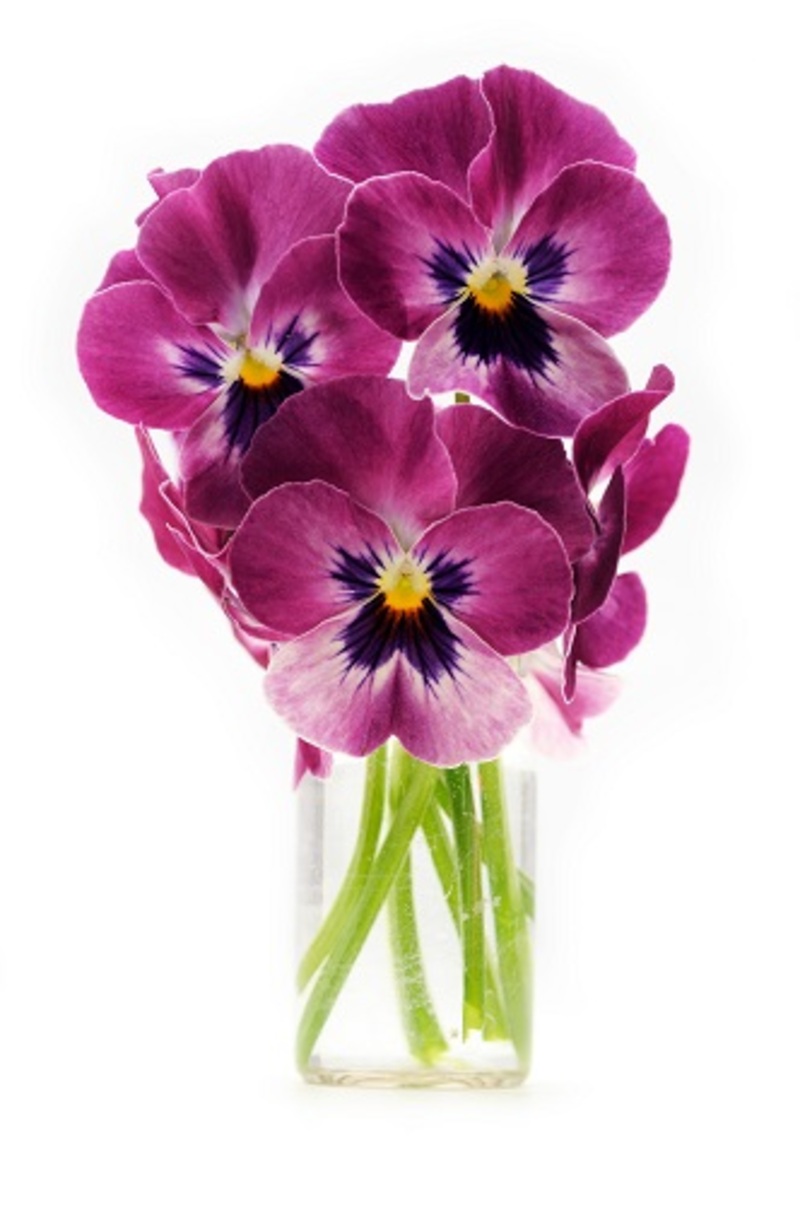From Bud to Bloom: Hydrangea Care Simplified
Posted on 21/08/2025
From Bud to Bloom: Hydrangea Care Simplified
Hydrangeas captivate gardeners and nature lovers with their grand, colorful blooms and lush foliage. Spanning from soft pastels to bold, vivacious hues, hydrangea flowers have become a hallmark of gorgeous gardens worldwide. Yet, growing hydrangeas doesn't have to be a challenge. In this comprehensive guide, we'll explore hydrangea care, contextually breaking down the essentials, troubleshooting common issues, and ensuring you can enjoy abundant blossoms from bud to full bloom.
Understanding Hydrangeas: An Overview
Before embarking on your hydrangea journey, it's essential to grasp the basics of these remarkable plants. Hydrangeas come in several species and varieties, each with unique characteristics. The most popular types for gardens include:
- Hydrangea macrophylla (Bigleaf hydrangea)
- Hydrangea paniculata (Panicle hydrangea)
- Hydrangea quercifolia (Oakleaf hydrangea)
- Hydrangea arborescens (Smooth hydrangea)
- Hydrangea serrata
Each variety holds its own charm, from the classic mophead blossoms to the elegant panicles. Understanding your chosen hydrangea helps you tailor care for thriving plants from bud formation to blooming glory.

Site Selection: Setting the Stage for Hydrangea Success
Light Requirements
Hydrangeas thrive with the right balance of sunlight. While most prefer morning sun and afternoon shade, some species, like panicle hydrangeas, can tolerate more direct sunlight. Too much sun can scorch the leaves; insufficient light results in fewer blooms. Ideally, choose a location receiving 3-5 hours of gentle sunlight per day.
Soil Preferences
Rich, well-drained soil is vital for healthy hydrangeas. Incorporate plenty of organic matter such as compost or leaf mold before planting. Good drainage prevents root rot, a common issue in hydrangea care. Aim for slightly acidic to neutral soil (pH 5.5-7.0).
- Test your soil pH and adjust as needed. Lime will increase alkalinity; sulfur can lower pH for more acidity.
- Note: The soil's pH can even impact hydrangea flower colors!
How to Plant Hydrangeas: A Step-by-Step Guide
- Dig a generous hole: Twice as wide and just as deep as the hydrangea's root ball.
- Amend the soil: Mix in compost to provide nutrients and improve structure.
- Set the plant: Place the hydrangea in the hole at the same depth as it was in the pot.
- Backfill gently: Fill the hole with amended soil, then press lightly.
- Water thoroughly: Hydrate your hydrangea immediately after planting to settle the soil.
- Mulch: Apply a 2-3 inch layer of organic mulch to retain moisture and suppress weeds.
Watering Hydrangeas: Keeping Blooms Happy and Healthy
Hydrangeas are known for their lush, thirsty nature. Consistent moisture is key--especially during buds and blooming season.
- Water deeply at least once a week, more during hot, dry spells.
- Use drip irrigation or water at the base to avoid wetting the leaves, which can lead to disease.
- Check soil moisture regularly; avoid letting the soil dry out completely.
Remember, even moisture is better than sporadic watering. Wilting leaves often indicate the need for a drink, but chronic wilting could root issues or too much sun.
Fertilizing Hydrangeas: Feed for Flowers
Choosing the Right Fertilizer
A balanced, slow-release fertilizer is best for healthy hydrangea growth. For lush foliage and abundant blooms:
- Apply fertilizer in early spring as new growth appears.
- A second, lighter application can be made in mid-summer if needed.
- If you have bigleaf hydrangeas, use a phosphorus-rich fertilizer to encourage blossoms.
Avoid over-fertilizing, as this can result in leafy plants with fewer flowers.
Pruning Hydrangeas: Timing is Everything
Know Your Type
Pruning hydrangeas can be intimidating, but timing and technique are crucial. Since different hydrangeas bloom on either "old wood" (growth from the previous year) or "new wood" (current year's growth), identify your variety first.
- Old wood bloomers: Prune immediately after flowering (Bigleaf, Oakleaf, and Mountain hydrangeas).
- New wood bloomers: Prune in late winter or early spring before new growth (Smooth and Panicle hydrangeas).
Always remove dead, damaged, or weak stems to promote healthy new growth. For shaping, avoid heavy pruning as it may reduce flowering.
Changing Hydrangea Color: The Magic of pH
One of hydrangeas' most captivating feats is their ability to change color based on the soil pH. This feature applies mainly to Hydrangea macrophylla (Bigleaf types).
- Acidic soil (pH below 6.0): Produces blue flowers.
- Neutral to alkaline soil (pH 6.0-7.0): Results in pink or red blooms.
To go bluer, add aluminum sulfate to the soil. To go pink, use garden lime. Most color changes take weeks to months, depending on the original soil conditions and amendments.
Seasonal Hydrangea Care: Year-Round Tips
Spring
- Remove winter mulch gradually.
- Feed with a balanced fertilizer.
- Prune as appropriate for your hydrangea type.
- Begin regular watering as needed.
Summer
- Deadhead spent flowers to encourage new buds.
- Maintain mulch to retain soil moisture.
- Monitor frequently for pests and diseases.
Autumn
- Keep plants watered until the first frost.
- Start reducing fertilizer applications.
- Let blooms dry for autumnal garden interest or for crafting.
Winter
- Apply a thick layer of mulch in colder regions to protect roots.
- Avoid pruning, except to remove damaged branches.
- Shield tender varieties with burlap if frost risk is high.
Common Hydrangea Problems and Solutions
Disease Management
- Powdery mildew: Appears as white, powdery patches on leaves. Improve air circulation and use fungicides as needed.
- Leaf spot: Dark spots on leaves signal overwatering or poor air flow. Remove infected leaves and avoid overhead watering.
- Root rot: Prevent by ensuring well-drained soil and avoiding soggy conditions.
Pest Control
- Aphids and spider mites: Hose off with water or apply insecticidal soap.
- Slugs and snails: Use traps or barriers around your hydrangea plants.
Environmental Stress
- Leaf scorch: Usually due to too much sun or not enough water. Provide shade and increase watering frequency.
- Delayed blooming: Can result from improper pruning or winter damage. Prune correctly and protect sensitive varieties in winter.
Pro Tips for Abundant Blooms
- Choose the right hydrangea for your climate and garden space.
- Mulch generously to conserve moisture and moderate root temperature.
- Practice proper pruning based on your hydrangea's bloom habit.
- Stay vigilant for signs of pests and disease.
- Experiment with pH for stunning color changes in your flowers.
- Deadhead spent blooms to encourage new flower growth unless you desire winter interest.
Hydrangea FAQs: Your Top Questions Answered
How do I encourage more hydrangea blooms?
Ensure proper sun exposure, avoid over-fertilizing, and prune at the correct time for your hydrangea type. Water and mulch regularly, and use phosphorus-rich fertilizer for abundant flowering.
Can I grow hydrangeas in containers?
Absolutely! Container hydrangeas need well-draining potting mix, regular watering, and a large enough pot for root expansion. Protect potted plants from extreme temperature swings.
Why are my hydrangea leaves turning yellow?
Yellowing leaves could signal overwatering, poor drainage, or nutrient deficiency (such as iron). Ensure the soil drains properly and feed with a balanced fertilizer.
How long do hydrangea blooms last?
Hydrangea flowers typically bloom from late spring through early autumn, depending on the variety and growing conditions.
Do hydrangeas need winter protection?
In colder areas, mulch heavily around the base, and consider wrapping plants in burlap or covering with frost cloth to shield buds from winter damage.

The Joy of Hydrangeas: From Bud to Blossom
Watching hydrangeas bloom is a gardener's delight, and with the right approach, it's a reward anyone can achieve. By understanding the unique needs of your hydrangea plants--including sunlight, water, soil, fertilization, and timely pruning--you'll cultivate a yard overflowing with color and vibrancy.
Embrace the magic of these stunning shrubs, experiment with color-changing soils, and enjoy abundant, flourishing hydrangeas season after season. Whether you're a seasoned horticulturist or a gardening newbie, let these tips simplify your care routine and transform your landscape into a hydrangea haven.
Conclusion: Hydrangea Care Made Simple
With thoughtful planning and attention, hydrangea care truly is simplified. From selecting the best varieties to feeding, pruning, and troubleshooting, your knowledge will translate into spectacular, healthy blooms. Cherish every moment--from the earliest bud to the fullest blossom--and let hydrangeas become the standout stars of your garden.
Ready to grow your own? Follow this guide, and experience the beauty and satisfaction of hydrangeas from bud to bloom. Your landscape will thank you!
Latest Posts
Flowers of the month: understanding their special meanings
From Bud to Bloom: Hydrangea Care Simplified
Identify the flower that echoes your inner self






